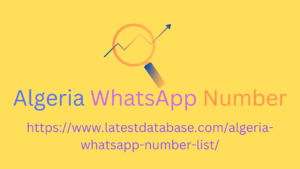|
|
Core Web Vitals: Google shares which factors should be a priority in 2023 Bruna Dourado Bruna Dourado Jan 18, 23 | 3 min read Human crafted content Need content for your business? Find top writers on WriterAccess! Try for free Recently, Google shared, through the Chrome DevRel team, some recommendations for optimizing the performance of Core Web Vitals in 2023. Core Web Vitals gathers the main factors of a page loading experience, as the user accesses and interacts with its elements. They are loading speed (largest contentful paint or LCP), visual stability (cumulative layout shift or CLS), and interactivity (first input delay or FID).
These factors can guide a series of changes to improve the performance of sites. However, which ones have the most impact and should be prioritized among the possibilities? That’s what the team shared and you can check it out below. Loading Speed (LCP) Largest Algeria WhatsApp Number Contentful Paint (LCP) isthe page loads its content completely for the user. The LCP measures loading speed by the rendering time, until the moment when its largest element appears on the screen. Currently, half of all websites have problems related to this factor. To stay within the loading limit, it is necessary to: Ensure that the LCP resource is detectable from the HTML source.

Generally, the largest element on the page is an image and it needs to be found in standard HTML attributes, such as. Ensure that the loading of the LCP resource is prioritized on the page. It is possible to use the fetchpriorityattribute onag that loads your LCP image. Use a CDN (Content Delivery Network) to optimize documents and Time to First Byte (TTFB) resources, so that the initial document response arrives as soon as possible. Visual Stability (CLS) Cumulative Layout Shift (CLS) is the metric that measures the frequency and severity of unexpected layout changes on a page, which occur when an element moves while the user interacts with it.
|
|